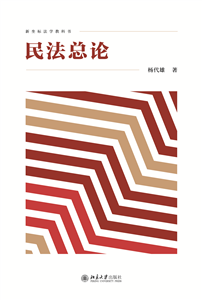基本信息 Information

高级遥感数字图像处理数学Math Physics Foundation of Advanced Remote Sensing Digital Image Processing
Part 1 The System and the Overall Processing Foundation
1 Overview of Remote Sensing Digital Image Processing
2 System Support Conditions for Remote Sensing Digital Image Processing and Analysis
3 Mathematical Basis for the Overall Processing and Analysis of Remote Sensing Digital
Images
4 Physical Foundation and Global Analysis of Remote Sensing Digital Images
Part II Pixel Processing Theory and Methods
5 Remote Sensing Digital Image Pixel Processing Theory I : Linear System with Space - Time
Domain Convolution
6 Remote Sensing Digital Image Pixel Processing Theory II : Time - Frequency Fourier
Transform from Convolution to Multiplication
7 Remote Sensing Digital Image Pixel Processing Theory III : Frequency Domain Filtering
8 Remote Sensing Digital Image Pixel Processing Theory IV : Time Domain Sampling
9 Basics of Remote Sensing Digital Image Pixel Transformation I : Space - Time
Equivalent Orthogonal Basis
10 Basics of Remote Sensing Digital Image Pixel Transformation II : Time - Frequency
Orthogonal Basis
Part III Technology and Application
11 Technology I of Remote Sensing Digital Image Processing : Noise Reduction and Image
Reconstruction
12 Technology II of Remote Sensing Digital Image Processing : Digital Image Compression
13 Technology III of Remote Sensing Digital Image Processing : Pattern Recognition
( Image Segmentation )
14 Technology III of Remote Sensing Digital Image Processing : Pattern Recognition
( Feature Extraction and Classification )
15 Technology IV of Remote Sensing Digital Image Processing : Color Transformation
and 3D Reconstruction
16 Applications of Remote Sensing Digital Image Processing
1 Overview of Remote Sensing Digital Image Processing
2 System Support Conditions for Remote Sensing Digital Image Processing and Analysis
3 Mathematical Basis for the Overall Processing and Analysis of Remote Sensing Digital
Images
4 Physical Foundation and Global Analysis of Remote Sensing Digital Images
Part II Pixel Processing Theory and Methods
5 Remote Sensing Digital Image Pixel Processing Theory I : Linear System with Space - Time
Domain Convolution
6 Remote Sensing Digital Image Pixel Processing Theory II : Time - Frequency Fourier
Transform from Convolution to Multiplication
7 Remote Sensing Digital Image Pixel Processing Theory III : Frequency Domain Filtering
8 Remote Sensing Digital Image Pixel Processing Theory IV : Time Domain Sampling
9 Basics of Remote Sensing Digital Image Pixel Transformation I : Space - Time
Equivalent Orthogonal Basis
10 Basics of Remote Sensing Digital Image Pixel Transformation II : Time - Frequency
Orthogonal Basis
Part III Technology and Application
11 Technology I of Remote Sensing Digital Image Processing : Noise Reduction and Image
Reconstruction
12 Technology II of Remote Sensing Digital Image Processing : Digital Image Compression
13 Technology III of Remote Sensing Digital Image Processing : Pattern Recognition
( Image Segmentation )
14 Technology III of Remote Sensing Digital Image Processing : Pattern Recognition
( Feature Extraction and Classification )
15 Technology IV of Remote Sensing Digital Image Processing : Color Transformation
and 3D Reconstruction
16 Applications of Remote Sensing Digital Image Processing












